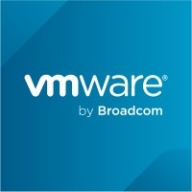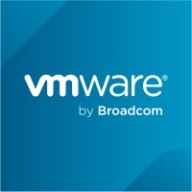


vCenter Configuration Manager and VMware Aria Automation compete in the IT automation and management category. Users are happier with VMware Aria Automation due to its robust feature set despite the higher price.
Features: vCenter Configuration Manager provides strong compliance management, automated audits, and comprehensive reporting. VMware Aria Automation offers scalability, flexibility in automating IT tasks, and excellent integration capabilities. Users rate VMware Aria Automation higher for these advanced features.
Room for Improvement: vCenter Configuration Manager could improve user experience and system integration. VMware Aria Automation needs to reduce complexity and improve documentation. Users are more vocal about needed improvements in vCenter Configuration Manager.
Ease of Deployment and Customer Service: vCenter Configuration Manager is straightforward to deploy but has mixed reviews on customer service. VMware Aria Automation has a complex deployment but excellent customer service. Users prefer VMware Aria Automation’s customer service despite deployment challenges.
Pricing and ROI: vCenter Configuration Manager is cost-effective and gives a good return on investment. VMware Aria Automation, while more expensive, offers superior features and a higher ROI. Users find VMware Aria Automation worth the extra expense due to its premium feature set.
| Product | Market Share (%) |
|---|---|
| Microsoft Intune | 9.4% |
| VMware Aria Automation | 5.4% |
| vCenter Configuration Manager | 0.8% |
| Other | 84.4% |



| Company Size | Count |
|---|---|
| Small Business | 116 |
| Midsize Enterprise | 46 |
| Large Enterprise | 152 |
| Company Size | Count |
|---|---|
| Small Business | 26 |
| Midsize Enterprise | 11 |
| Large Enterprise | 19 |
| Company Size | Count |
|---|---|
| Small Business | 32 |
| Midsize Enterprise | 24 |
| Large Enterprise | 130 |
Microsoft Intune provides centralized management of mobile devices and applications, ensuring security, compliance, and productivity through integration with Microsoft services like Microsoft 365 and Azure Active Directory.
Organizations use Intune for managing mobile devices and applications, enhancing security and compliance across platforms. With features like single sign-on, conditional access, and zero-touch deployment via Autopilot, it facilitates efficient operations. Intune's scalability, easy enrollment, and capabilities such as remote wipe support diverse device management, offering robust data protection and efficient operation. Despite its features, improvement areas include reporting, compatibility with non-Microsoft devices, and better support for macOS and Linux devices.
What are the key features of Microsoft Intune?
What benefits should users look for in reviews?
In industries such as finance, healthcare, and education, Microsoft Intune is implemented to ensure secure and compliant device management. Companies leverage its capabilities to deploy security policies and manage both corporate-owned and BYOD environments, facilitating a unified approach to data protection and compliance.
vCenter Configuration Manager is a powerful configuration management tool that is designed to enable organizations to ensure that any environment that they use to conduct business is configured in the most effective possible way. It can automate configurations consistently across virtual, physical, and cloud environments. Additionally, it enables users to place critical functions into the hands of the solution thereby avoiding the possibility that human error will reduce a business’s operations. It also hardens operations against bad actors who look for holes in a user’s security compliance policies that they can exploit.
vCenter Configuration Manager Benefits
Some of the ways that organizations can benefit by choosing to deploy vCenter Configuration Manager include:
vCenter Configuration Manager Features
Reviews from Real Users
vCenter Configuration Manager is a highly effective solution that stands out when compared to many of its competitors. Two major advantages it offers are its intuitive and simple design and its ability to scale according to the needs of its user.
Moses S., a project manager at Swakop Uranium, writes, “The platform is straightforward and user-friendly. A large knowledge base is not required to begin using it.”
Raju P., an Information Technology manager at Sikraft, says, “We can scale the solution as needed.”
VMware Aria Automation is a cloud management tool that allows companies to simplify their cloud experience through a modern automation platform. The solution is designed to deliver self-service clouds, multi-cloud automation with governance, and DevOps-based security and infrastructure management. It helps organizations improve IT agility, efficiency, and productivity through its various features.
VMware Aria Automation has multiple use cases that include the following:
VMware Aria Automation Features
VMware Aria Automation has various features that allow users to easily perform operations. Some of the solution's capacities include:
VMware Aria Automation Benefits
VMware Aria Automation offers its users various benefits. Some of the biggest advantages that the solution brings to companies that utilize it include:
Reviews from Real Users
Awais J., CTO/CEO at a tech services company, likes VMware Aria Automation because it saves a lot of time, provides more visibility, and has extensive automation capabilities.
An IT consultant at a government rates VMware Aria Automation highly because the product gives you flexibility to analyze and consume resources.
We monitor all Configuration Management reviews to prevent fraudulent reviews and keep review quality high. We do not post reviews by company employees or direct competitors. We validate each review for authenticity via cross-reference with LinkedIn, and personal follow-up with the reviewer when necessary.